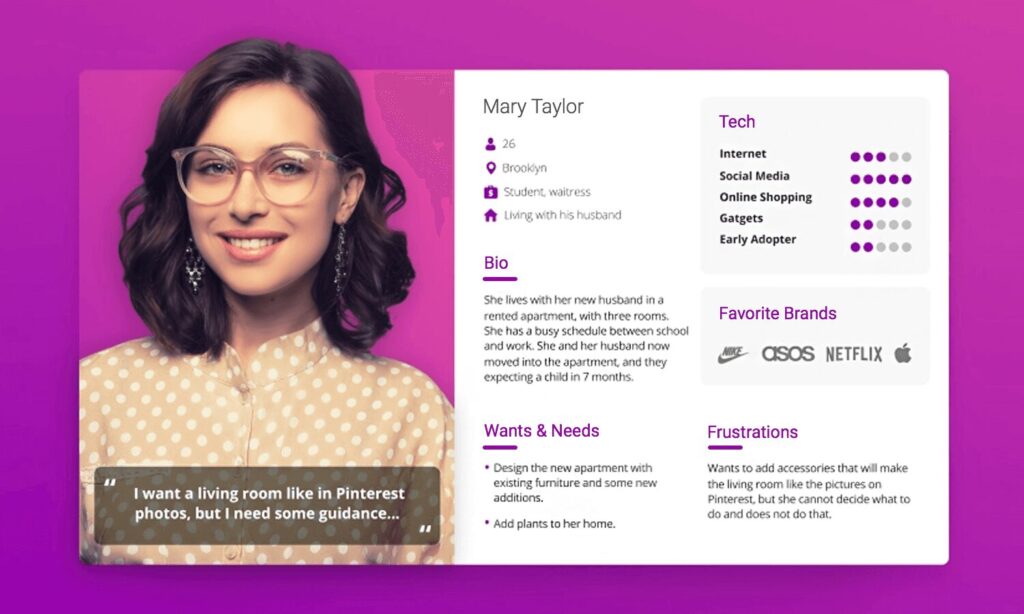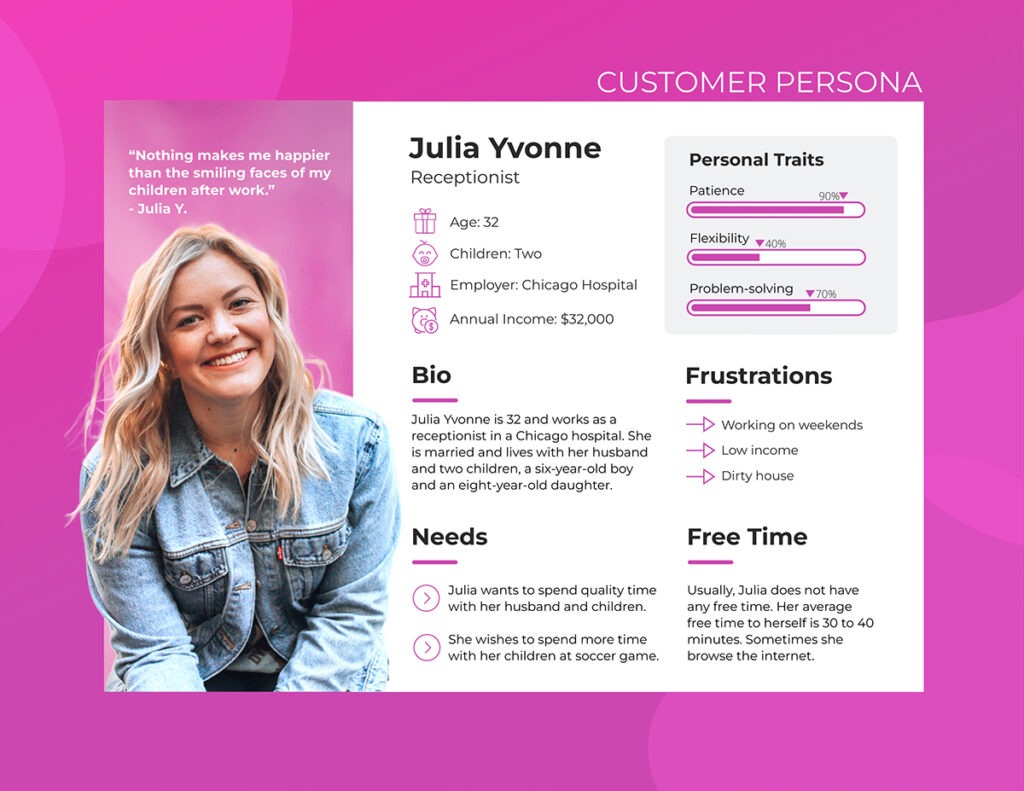
In the world of user experience (UX) design, understanding your users is pivotal. Creating personas for UX design is a technique that brings user needs, behaviours, and attributes to life, aiding designers in crafting intuitive and user-centered products. This guide will walk you through the steps to create personas for UX design, ensuring your design decisions are grounded in real user data.
UX personas are fictional characters that represent the different user types within a targeted demographic that might use a site, brand, or product in a similar way. Personas are created through research, analysis, and patterns of your target audience. They help design teams to empathise with the users they’re designing for, making personas an invaluable asset in the UX design process.

The first step in creating personas is to gather as much information as possible about your users. This involves conducting user research through methods such as interviews, surveys, observation, and data analysis. The goal is to understand the users’ goals, needs, behaviours, challenges, and motivations. Aim to involve a diverse group of participants to get a comprehensive view of your user base.
Once you’ve collected your data, the next step is to analyse your findings to identify patterns and commonalities among your users. Look for behaviours, goals, skills, attitudes, and the context of use that many users share. This analysis will help you group users into distinct segments, which will serve as the foundation for your personas.
Begin drafting your personas by selecting the most representative user groups identified in your research. A persona should include the following elements:
With your initial personas drafted, it’s important to validate and refine them with real users. Share your personas with stakeholders and test them against additional user research to ensure they accurately represent your user base. Be prepared to make adjustments based on feedback and new insights.
Once your personas are defined and validated, integrate them into the UX design process. Use personas to guide design decisions, from ideation to prototyping to testing. Personas can help answer critical questions about user preferences and behaviours, ensuring the final product aligns with user needs.
User needs and behaviours evolve over time, and so should your personas. Regularly revisit and update your personas based on new research, market trends, and product changes to keep them relevant and useful.
Creating personas for UX design is a powerful tool for understanding and empathising with your users. By following these steps and integrating personas into your design process, you can create more user-centered products that meet the real needs and expectations of your target audience. Remember, personas are living tools that should evolve as your understanding of your users deepens. Happy designing!
Creating personas for UX design bridges the gap between user needs and design solutions, ensuring products are crafted with the user in mind. By following the steps outlined in this guide, designers can create effective, research-based personas that enhance the UX design process and lead to more successful products.
UX personas are fictional characters created based on user research to represent the different types of users that might interact with a product, website, or brand. They are crucial because they help design teams understand and empathise with the users they are designing for, thereby facilitating the creation of more intuitive and user-centered designs.
Effective user research for creating personas can be conducted through a variety of methods, including interviews, surveys, observations, and data analysis. The aim is to gather comprehensive information about the users' goals, needs, behaviours, challenges, and motivations. Involving a diverse group of participants is key to obtaining a holistic view of your user base.
A well-crafted persona should include a name and photo to humanise the character, demographic details (such as age, occupation, and education level), background and lifestyle information, the persona's goals and needs, frustrations and pain points, behaviours and habits, and preferred channels and technology.
Personas can be validated and refined by sharing them with stakeholders and comparing them against additional user research to ensure they accurately represent your user base. Adjustments should be made based on feedback and new insights to keep the personas accurate and useful.
Keeping personas updated is necessary because user needs and behaviours can evolve over time, as can market trends and product offerings. Regularly revisiting and updating your personas ensures they remain relevant and continue to effectively guide the UX design process. The frequency of updates should be based on the pace of change in your industry and user base, but a general recommendation is to review personas at least once a year or whenever significant product changes occur.